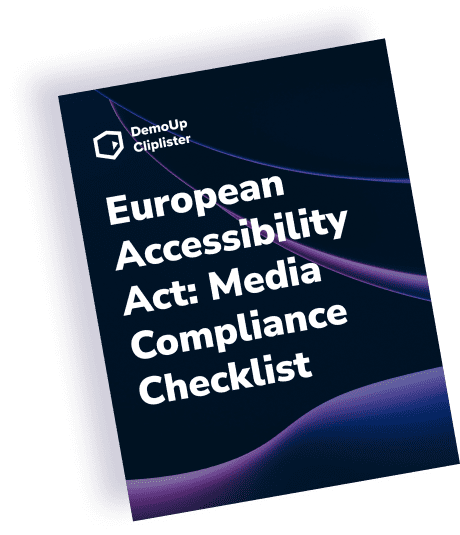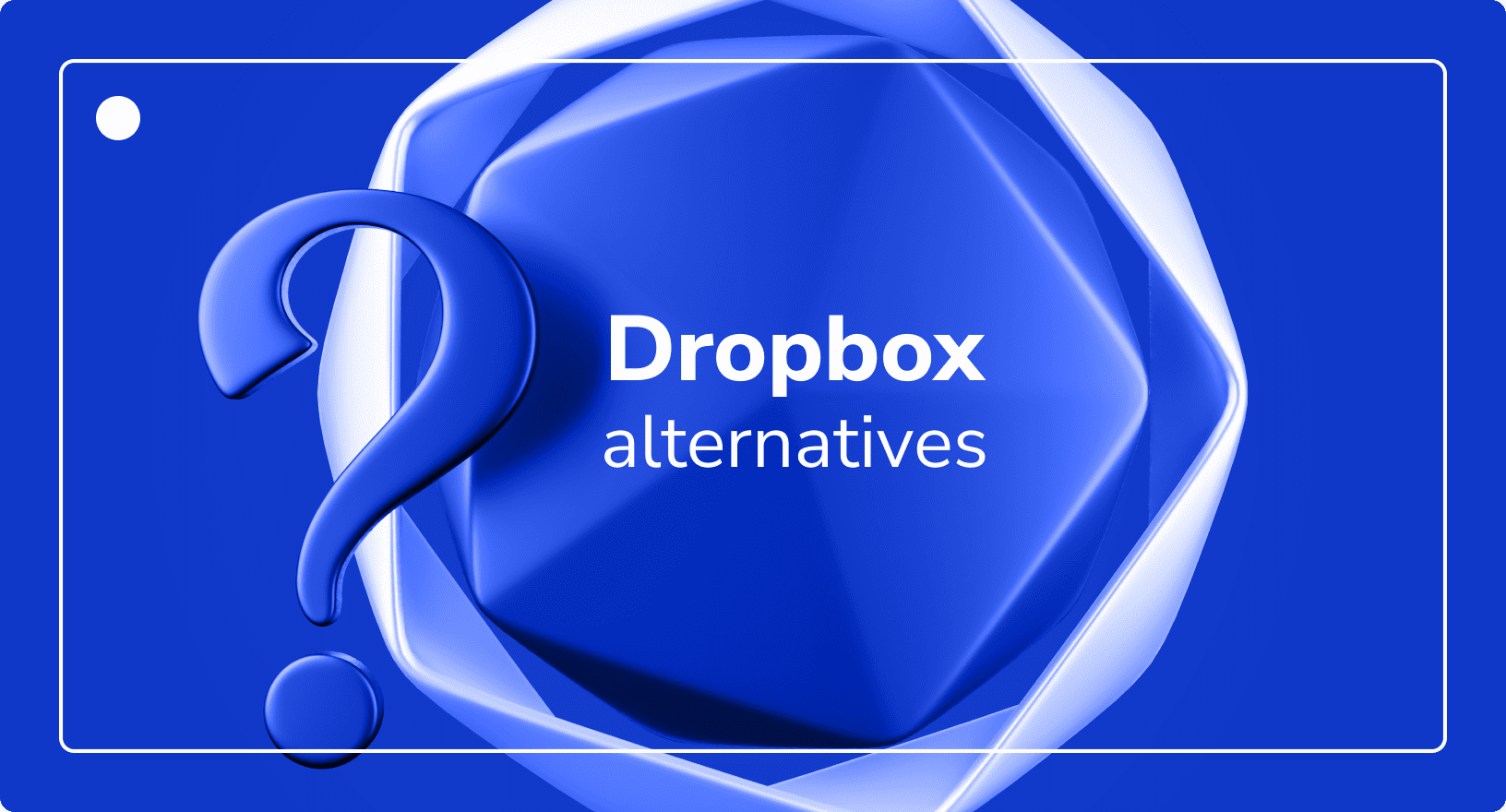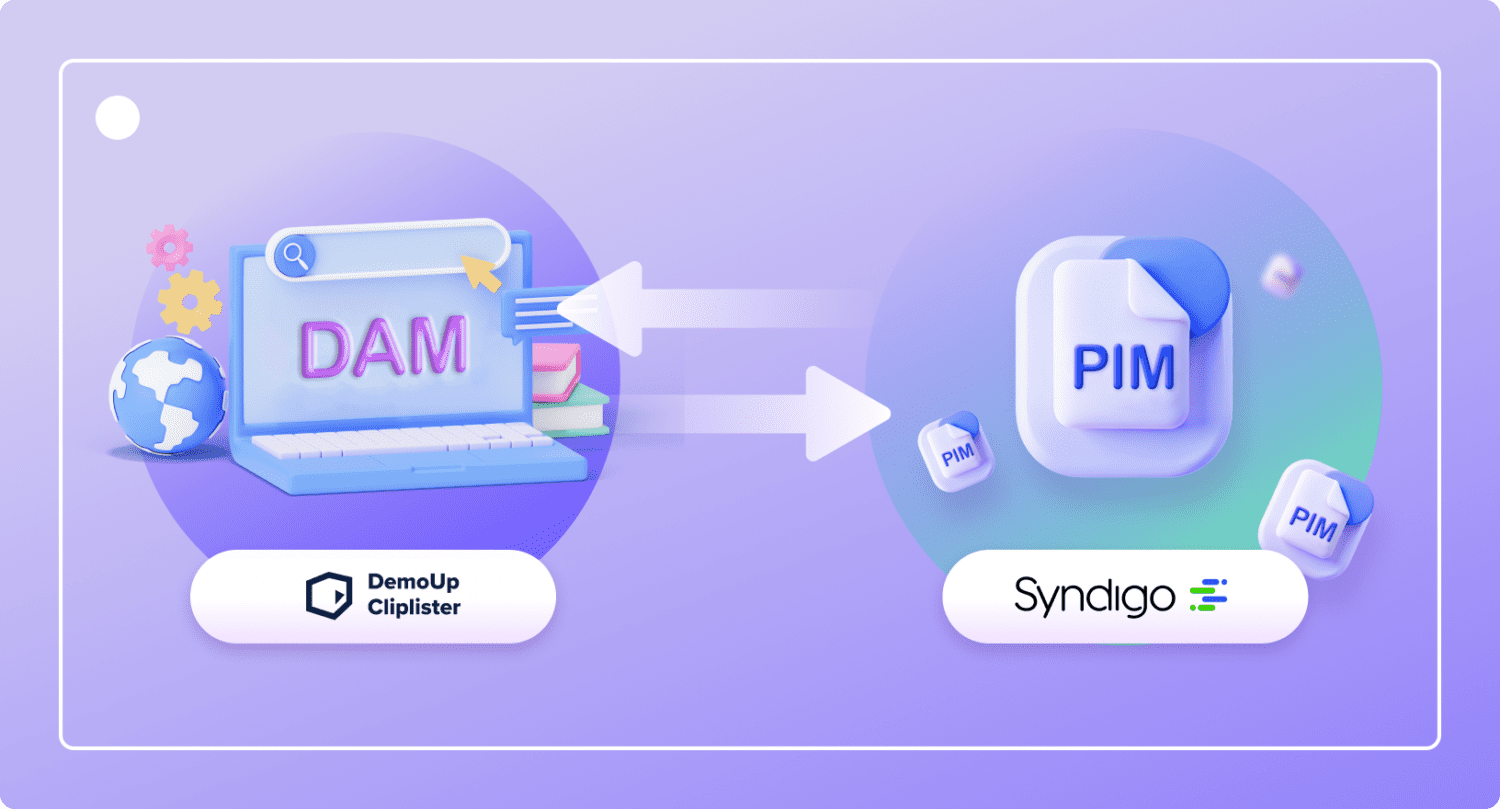Web Accessibility in E-Commerce: Your Guide to Conformance – And More Sales
Digital Accessibility
Updated on February 13, 2025
E-commerce sites often focus on sleek designs and fast loading times but completely overlook accessibility. This oversight doesn’t just shut out millions of potential customers; it’s also a direct hit to your bottom line and exposes you to legal risks.
Imagine a customer who can’t even find the “Buy Now” button because your site isn’t optimised for screen readers. That’s money walking right out the door.
Now, picture a website where everyone can shop with ease: intuitive navigation, clear product descriptions, and streamlined checkouts for all. This isn’t just about compliance with the European Accessibility Act (EAA); it’s about boosting your sales, enhancing your brand, and staying one step ahead of the game.
With over 98% of websites missing the mark on accessibility standards, and 84% of e-commerce sites caught up in accessibility lawsuits, following the Web Content Accessibility Guidelines (WCAG) and meeting EAA standards means more customers and fewer headaches.
This guide will show you how to make your e-commerce site accessible, transforming inclusivity from a legal obligation into a competitive advantage.

How Accessible is Your Content? Find Out with This Free Checklist!
Download NowWhat is Web Accessibility?
Web accessibility ensures that everyone, including the 15% of the world’s population living with a disability, can access and understand your content without barriers.
If your site isn’t accessible, you’re potentially losing out on reaching over 1 billion people globally who have some form of disability. Accessibility isn’t just a nice-to-have; it’s essential for reaching a broader audience and building a brand that values inclusivity.
Definition of Web Accessibility
Web accessibility means designing and developing your website so everyone can perceive, navigate, understand, and interact with your content. It’s more than just ticking a compliance box; it’s about creating a seamless user experience for everyone. For example, over 70% of visually impaired users rely on screen readers.
If your website isn’t compatible with these technologies, you’re alienating a significant portion of potential customers.
Why Accessibility Matters
Accessibility isn’t just a moral obligation; it directly impacts your revenue. In the UK alone, £11.75 billion is lost every year due to inaccessible websites.
Imagine a customer abandoning their shopping cart because they couldn’t navigate your site with a keyboard or find the alt text for images. Not only is that a lost opportunity, it’s lost revenue and a damaged reputation – because 71% of users with disabilities will leave a website that’s difficult to use.
Key Principles of Web Accessibility
Web Accessibility Principles (POUR)
Perceivable: Content must be perceivable for all users, including those using screen readers and other accessibility tools.
Operable: All users must be able to navigate content and websites easily using keyboard, mouse or voice commands.
Understandable: Straightforward navigation and clear language helps people comprehend content using a variety of methods.
Robust: Follow correct accessibility frameworks so content and websites will function using both current and future technologies.
The WCAG are built on four key principles that ensure your website is accessible to everyone:
Perceivable
Your website should be designed so that all users can perceive the content. This means providing text alternatives for non-text content, captions for videos, and ensuring screen reader compatibility.
With 82% of users stating they would spend more money online if content was more accessible, addressing this can significantly impact your bottom line.
Operable
Make sure everyone can navigate your website easily, whether they’re using a keyboard, a mouse, or voice commands. In the US alone, more than 28% of Americans have a disability that impacts major life activities, including how they interact with digital content, highlighting the importance of keyboard accessibility.
Understandable
Content must be easy to understand. Using clear language and straightforward navigation can make a huge difference. A study found that 69% of users with disabilities abandon websites due to poor accessibility, including confusing content and navigation. Simplifying these elements increases user satisfaction and retention.
Robust
Build your website to work with current and future technologies, including assistive devices. Websites that adhere to coding standards and use Accessible Rich Internet Applications (ARIA) roles for dynamic content can cater to a broader audience, including the 2 million people in the UK with sight loss.
Web Accessibility Guidelines and Standards
Understanding web accessibility is essential for creating an inclusive digital environment. This section outlines the major guidelines and standards you should be aware of to ensure your web content is accessible to everyone, including people with disabilities.
Web Content Accessibility Guidelines (WCAG)
The Web Content Accessibility Guidelines (WCAG) are international standards that make web content more accessible. These guidelines are created by the World Wide Web Consortium (W3C).
The WCAG provides a comprehensive approach to ensure websites are usable by people with various disabilities, including auditory, visual, physical, cognitive, speech, language, learning, and neurological disabilities.
This approach is divided into three levels of conformance – levels A, AA and AAA:
- Level A: The minimum level addresses the most basic web accessibility features. Achieving Level A compliance ensures that some users with disabilities can access the content.
- Level AA: This is the level most organisations aim for, as it addresses more significant barriers to accessibility. It requires meeting all Level A and Level AA criteria, providing greater accessibility for a broader range of users.
- Level AAA: The highest and most comprehensive level, which includes all Level A, AA, and additional criteria. Achieving Level AAA conformance ensures the highest web accessibility standard, though it may not be feasible for all web content due to the stringent requirements.
Authoring Tool Accessibility Guidelines (ATAG)
Authoring Tool Accessibility Guidelines (ATAG) ensure that the tools used to create web content are accessible to everyone, including people with disabilities. But ATAG isn’t just about making tools accessible—it’s about empowering all users to create content that everyone can enjoy.
Imagine a content creator with limited fine motor skills using a website builder that lacks keyboard shortcuts or voice command options. Without these features, navigating and editing becomes frustrating and slow, reducing productivity and possibly preventing them from completing their work.
- Making Tools Accessible: Ensuring tools can be used by everyone, like having keyboard navigation in video editing software for those who can’t use a mouse.
- Encouraging Accessible Content: Helping authors create accessible content, such as prompting for alt text in a blogging platform to support screen readers.
In short, ATAG makes the internet more inclusive and reaching a broader audience. Investing in accessible tools can enhance your brand’s reputation, improve user experience, and avoid legal risks.
Accessible Rich Internet Applications (ARIA)
Accessible Rich Internet Applications (ARIA) are here to make sure your dynamic web content—think modals, sliders, and accordions—is fully accessible. Without ARIA, users relying on assistive technologies, like screen readers, can easily get lost in a maze of inaccessible content.
And when users can’t navigate your site? They leave. That’s not just lost traffic; that’s lost revenue.
Consider a visually impaired user navigating a website with a drop-down menu or pop-up form. Without ARIA attributes, their screen reader won’t announce these elements properly, creating confusion and frustration.
ARIA roles and properties help bridge this gap, ensuring that all users, regardless of ability, can interact with your website smoothly and effectively.
Want to start making your content more accessible using ARIA? Stick to these five rules:
Accessible Rich Internet Applications Rules
Rule 1: Use native HTML at all times.
Rule 2: Do not change HTML semantics unless required.
Rule 3: All controls must be keyboard accessible.
Rule 4: Never add role=”presentation” or aria-hidden=”true” for focusable elements.
Rule 5: All interactive elements must have accessible names.
By following these guidelines, you’re not just complying with regulations—you’re building a user experience that invites everyone in, enhancing your brand’s reputation and reliability.
Web Accessibility Initiative (WAI)
Think of the Web Accessibility Initiative (WAI) as your roadmap to an inclusive web. WAI isn’t just about setting the rules—it’s about providing the tools and resources you need to make your site accessible to all.
From the Web Content Accessibility Guidelines (WCAG) to ARIA, WAI equips you with everything you need to ensure every user, regardless of ability, can interact with your digital content.
WAI is the driving force behind making the internet a space for everyone. It’s not just about following guidelines; it’s about leading by example.
With WAI’s step-by-step guides and templates, developers can easily meet accessibility standards, ensuring their websites are navigable, understandable, and inclusive.
Legal and Regulatory Aspects of Web Accessibility
Web accessibility is not optional—it’s essential for avoiding fines, lawsuits, and reputational harm, while promoting inclusivity.
The European Union has established clear rules to ensure everyone can access the web. By complying with these regulations, you position yourself as a leader in inclusivity.
EU Web Accessibility Directive
The EU Web Accessibility Directive (Directive (EU) 2016/2102) requires public sector websites and mobile applications to be accessible, particularly for people with disabilities.
Since 2016, public sector bodies in EU member states have been obligated to meet specific accessibility standards, including support for assistive technologies like screen readers.
The directive goes beyond basic compliance, requiring regular monitoring and reports on accessibility, with a comprehensive review due by the end of 2024.
European Accessibility Act (EAA)
The European Accessibility Act (EAA) extends the principles of the Web Accessibility Directive to a wider range of products and services, including computers, smartphones, banking services, and e-commerce platforms.
Download the full EAA deep dive video
For example, the EAA mandates that e-commerce sites must be accessible, improving media consumption for visually impaired users. Making content accessible not only meets legal requirements but also expands your customer base and enhances brand reputation.
The Role of Assistive Technologies
Assistive technologies are essential for web accessibility. Tools like screen readers and text-to-speech ensure everyone can access your content, no matter their abilities. Integrating these into your development process not only meets accessibility standards but often exceeds them.
Screen Readers
Screen readers convert digital text into speech or Braille, enabling visually impaired users to navigate and interact with your site. Adding alt text and structuring HTML properly ensures screen readers work seamlessly, offering an inclusive experience.
Text-to-Speech
Text-to-speech (TTS) converts written text into spoken words, helping users with learning disabilities or those who prefer listening. Including TTS on your site broadens access to your content, improving user experience.
Keyboard Accessibility: Essential for All Users
Keyboard accessibility is vital for users who can’t use a mouse. Ensuring all interactive elements are accessible by keyboard creates a more user-friendly experience for everyone.
Common Keyboard Shortcuts for Websites

Enter: Follow links/trigger actions

Alt (CMD on Mac) + Left Arrow: Go back

Alt (CMD on Mac) + Right Arrow: Go Forward

Tab / Tab + Shift: Navigate between HTML tabindex elements.

Spacebar / Spacebar + Shift: Scroll down and up

Arrow Keys: Navigate form elements
Integrating these technologies not only meets legal requirements but also positions you as a leader in creating an inclusive digital space.
Key Elements of an Accessible Website
The prior sections covered a lot of information about what accessibility is, and how it works. But how can you truly make your website accessible?
Make your site truly accessible by prioritising these key elements:
User Interface Components
Ensure your website’s user interface—forms, buttons, and navigation menus—is easy for everyone to use. Prioritise designs that work seamlessly with keyboards, screen readers, and other assistive technologies.
For instance, user agents and content management systems should support ARIA attributes to improve navigation and interaction for users relying on assistive technology.
Audio and Video Content
Make your audio and video content accessible to everyone by providing captions, transcripts, and audio descriptions.
These features don’t just help users with hearing or visual impairments—they improve the overall experience for everyone, including those in noisy environments or who prefer reading over listening.
No audio should ever play automatically, preventing disruptions for users relying on screen readers and other assistive devices. You can do this by setting all video content to mute by default.

How Accessible is Your Content? Find Out with This Free Checklist!
Download NowText Alternatives (Alt Text)
Add concise yet descriptive alt text to images and visual content. Alt text enables screen readers to convey the information to visually impaired users, ensuring they receive the same understanding as sighted visitors.

What makes good alt-text? Let’s use the image above as an example.
- Bad alt text: A dog playing
- OK alt text: A dog runs through a green grass while carrying a green ball in its mouth.
- Great alt tex: A small dog wearing a harness runs joyfully across a green field, carrying a green ball in its mouth. The bright, sunny day and open grass provide a playful backdrop, with a few yellow dandelions scattered throughout the field.
Make sure the text captures the image’s purpose and context, particularly for graphics and charts that provide essential information.
Error Messages
Write clear, descriptive error messages that help users understand and fix mistakes quickly. Don’t rely on colour alone to convey errors, as this can confuse users with visual impairments.
Instead, use text explanations linked to form fields using ARIA attributes like aria-describedby. This approach ensures all users can easily identify and resolve errors, enhancing the overall user experience.
This approach not only complies with legal requirements but also expands your reach and reinforces your commitment to inclusivity.
Designing for Accessibility
Creating accessible websites is crucial to ensuring inclusivity for all users, regardless of their abilities. Here’s how designers and developers can achieve this:
Website Designers and Developers
Prioritise accessibility from the start. Follow the Web Content Accessibility Guidelines (WCAG) to ensure your site is perceivable, operable, understandable, and robust.
Add text alternatives for images, enable keyboard navigation, and make interactive elements easy to identify. Use clean HTML and ARIA roles to enhance screen reader compatibility.
Consistently applying these practices creates a more inclusive online experience.
Content Management Systems (CMS)
Choose an accessible CMS. Many platforms like WordPress, Drupal, and Joomla need plugins or customisation to meet accessibility standards.
Ensure your CMS supports keyboard navigation, text readers, and offers clear instructions and labels for forms. Selecting the right CMS helps maintain accessibility across your site.
Also consider integrating a DAM with accessibility features into your CMS. This way only approved, accessible assets are available for web use.
Dynamic Content
Dynamic content—such as interactive elements and multimedia—poses unique challenges for accessibility.
Use ARIA roles and properties to label dynamic elements clearly and provide text alternatives for multimedia. Ensure all dynamic changes are announced to user agents like text readers.
For example, ARIA live regions can notify users of content updates in real time without needing a page refresh.
Testing for Accessibility
Testing is vital to ensuring accessibility. Automated tools can identify issues like missing alt text, poor colour contrast, and keyboard navigation problems.
However, automated testing isn’t enough. Manual testing evaluates the website’s usability with different assistive technologies and from the perspective of users with disabilities.
Include tools like text readers and speech recognition software in your testing process and conduct usability tests with real users with disabilities. Combine automated and manual methods for a complete understanding of your website’s accessibility.
Accessibility requires collaboration among designers, developers, and content managers. Choose the right tools and continuously test and refine your website to create a user-friendly experience for everyone, broaden your audience, and enhance your web presence’s usability and inclusivity.
Benefits of Web Accessibility
Web accessibility offers more than just compliance—it provides a strategic edge by making your digital spaces inclusive and user-friendly. Here’s why it matters:
Ensure Equal Website Access for All Users
Web accessibility lets everyone, including those with disabilities, use your website effectively. Tools like text readers, keyboard navigation, and text-to-speech systems make your content accessible to users with various impairments.
Meet accessibility standards to empower all users to engage with your content, and you will enhance your reach and reputation.
Improve User Experience
Accessible websites create better experiences for all users. Features like simple navigation, readable fonts, and alternative text for images benefit everyone, not just those with disabilities.
Captioned videos, for instance, help users in noisy environments, while clear layouts simplify navigation. These enhancements increase user satisfaction and engagement.
Legal and Ethical Benefits
Complying with web accessibility laws protects you from legal risks and reinforces your commitment to inclusivity and social responsibility. Many countries mandate accessible websites, and non-compliance can lead to penalties and damage your reputation. Equal access builds trust and loyalty among all users.
Web accessibility isn’t just a technical requirement; it’s a commitment to creating a better, more inclusive digital world. Prioritise accessibility to expand your audience, enhance user experience, and uphold your brand’s values.
Implementing Accessibility in the Development Process
Integrate accessibility into every stage of web development to enhance usability for all users, including those with disabilities. Here’s how to do it effectively:
Prioritise Accessibility from the Start
Incorporate accessibility requirements at the outset of your project. Define user stories and personas that include users with disabilities. Consider accessibility in wireframes, prototypes, user interface components, and colour palettes to ensure inclusivity.
Conduct regular evaluations using accessibility checklists. Use accessible design patterns and guidelines to create an inclusive user interface. Engage users with disabilities in the design review process to gather feedback and make necessary adjustments.
Ensure designers, developers, and accessibility experts collaborate consistently to maintain focus on accessibility throughout the project.
Create an Accessibility Statement
Publish an accessibility statement on your website to declare your commitment to providing an accessible digital experience. Detail your accessibility goals, the standards you follow, and the steps you have taken to achieve these standards.
DemoUp Cliplister’s Accessibility Statement
Measures to Support Accessibility:
DemoUp Cliplister has taken the following measures to ensure accessibility of our video player and the content we provide:
- Integrating accessibility into our mission statement.
- Incorporating accessibility standards throughout our internal policies.
- Assigning clear accessibility targets and responsibilities to our team members.
Ongoing Effort:
Accessibility is a core component of our development process and organisational culture. We continue to enhance our video player and content to meet and exceed the standards set by WCAG 2.1 Level AA, without any exceptions, by June 2025.
Feedback:
We welcome your feedback on the accessibility of our products. Please let us know if you encounter accessibility barriers on our video player or any video content:
- Email: [Your Contact Email]
- Phone: [Your Contact Number]
- Visitor Address: [Your Office Address]
Please report any issues via email to contact@demoup-cliplister.com. Your feedback is essential in helping us progress and ensuring our platform becomes fully accessible to all.
Include instructions on how users can report accessibility issues. This statement should be easy to find and understand, demonstrating your dedication to inclusivity and guiding continuous improvement.
Train and Raise Awareness
Educate your team about web accessibility to build a culture of inclusivity. Provide resources like webinars, workshops, and conferences focused on best practices. Tailor training to specific roles to ensure everyone has the knowledge and skills needed for accessible web development.
Encourage ongoing learning and update your team regularly on the latest accessibility trends. Develop a workplace culture that values accessibility to ensure your team remains committed to maintaining high standards.

How Accessible is Your Content? Find Out with This Free Checklist!
Download NowOvercoming Common Accessibility Barriers
Address accessibility challenges for various disabilities by implementing practical strategies:
- For Cognitive Disabilities: Simplify content with plain language, short sentences, and clear headings. Minimise distractions by reducing unnecessary content and avoiding auto-play videos. Offer personalisation options, like adjustable text size and colour contrast, and provide clear instructions and labels.
- For Visual Impairments: Provide text alternatives for images and ensure keyboard navigation for all interactive elements. Use high contrast and resizable text to improve readability. Ensure compatibility with screen readers by using semantic HTML and ARIA roles.
- For Hearing Impairments: Provide captions for videos and transcripts for audio content. Use visual alerts instead of sounds to convey important information. Avoid auto-playing media, and ensure a consistent layout to help users locate information quickly.
Test for Accessibility
Test your website for accessibility using both automated tools and manual methods. Automated tools can identify issues like missing alt text or poor colour contrast, but manual testing with assistive technologies and real users is crucial for a comprehensive evaluation.
Combine these methods to ensure your website meets accessibility standards and provides a seamless experience for all users.
Integrating these practices into your development process helps you create accessible content that enhance the buying journey and comply with legal and ethical standards.
Accessibility is an ongoing commitment that requires continuous attention and improvement.
Conclusion
Accessible content and websites provide equal access to all. It promotes inclusivity and benefits everyone – not just those with disabilities.
The best practices mentioned in the article here will help you create content that is perceivable, operable, understandable, and robust.
Accessibility not only broadens your audience but also enhances your brand image, drives innovation, and improves user satisfaction. It’s your secret weapon that helps you tap into an extra 15% of the world’s population.
As digital platforms become essential to everyday life, ensuring accessibility is both a social responsibility and a business advantage.
Frequently Asked Questions
Here are some frequently asked questions about web accessibility to help you understand its importance and how to implement it effectively.
Web accessibility relies on four key principles: Perceivable, Operable, Understandable, and Robust (POUR). These principles ensure all users can access content, regardless of their abilities. They form the core of the Web Content Accessibility Guidelines (WCAG), which offer detailed recommendations for making websites more accessible.
Screen readers convert digital text into speech or Braille, allowing users with visual impairments to navigate and interact with online content. They read aloud text on the screen, including descriptions of images, links, and buttons. Popular screen readers include JAWS, NVDA, and VoiceOver.
Alt-text describes images on a website, making them accessible to users who rely on screen readers. It helps these users understand the content and context of images, ensuring visual information is available to everyone. Including descriptive alt-text is essential for creating inclusive content.
Use tools like WAVE, Axe, and Lighthouse to test your website’s accessibility. These tools evaluate your site against WCAG guidelines and identify areas for improvement. Regular testing and updates help maintain compliance and ensure all users can access your content effectively.
In the EU, laws like the European Accessibility Act require accessibility for web content to be enforced at the national level. These laws mandate that public and private entities make digital content accessible to people with disabilities. Failing to comply can result in lawsuits, fines, and damage to your organisation’s reputation.
Better Content. More Sales.

Fill out the form to discover our end-to-end eCommerce content solutions for brands & shops




